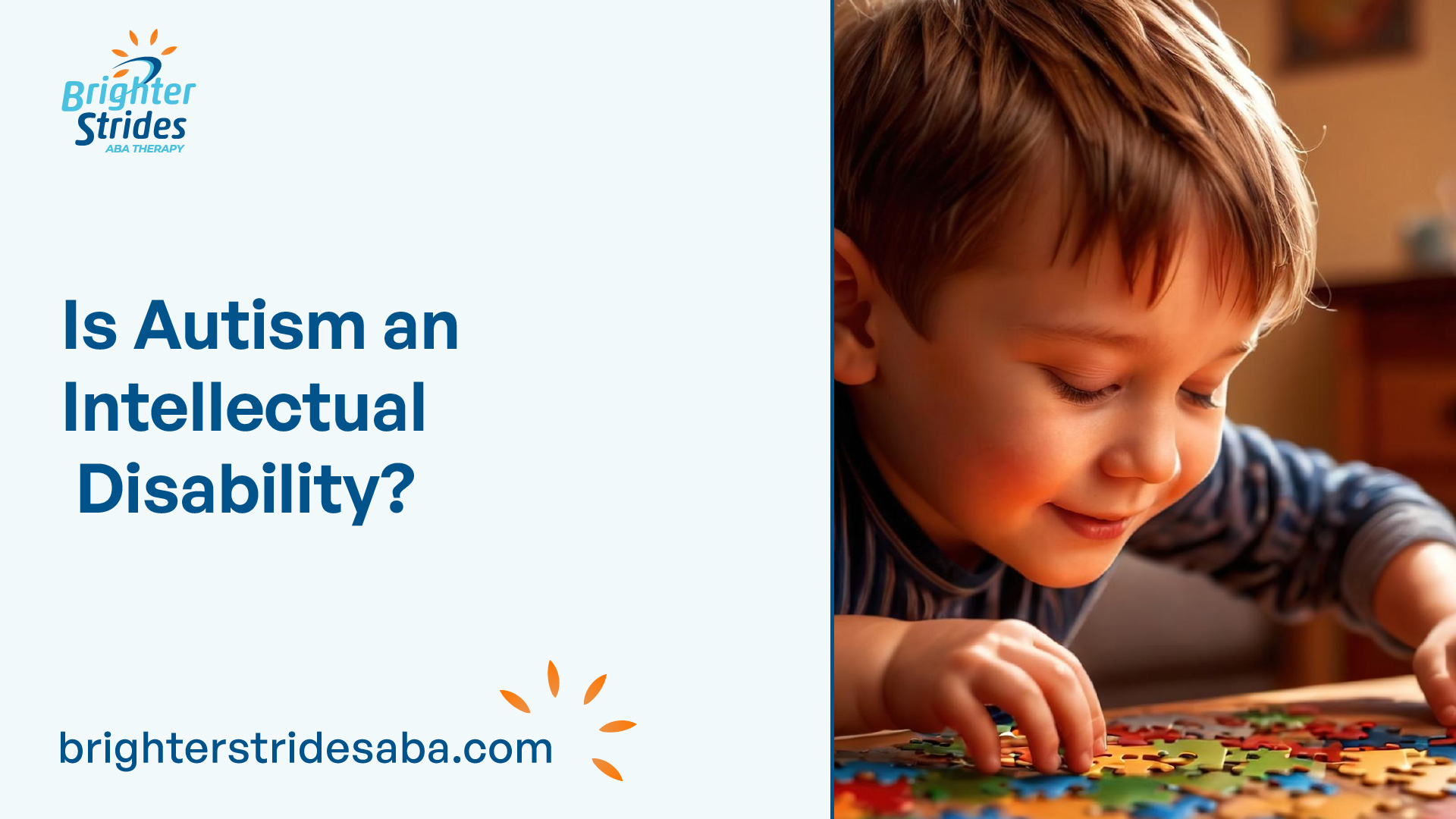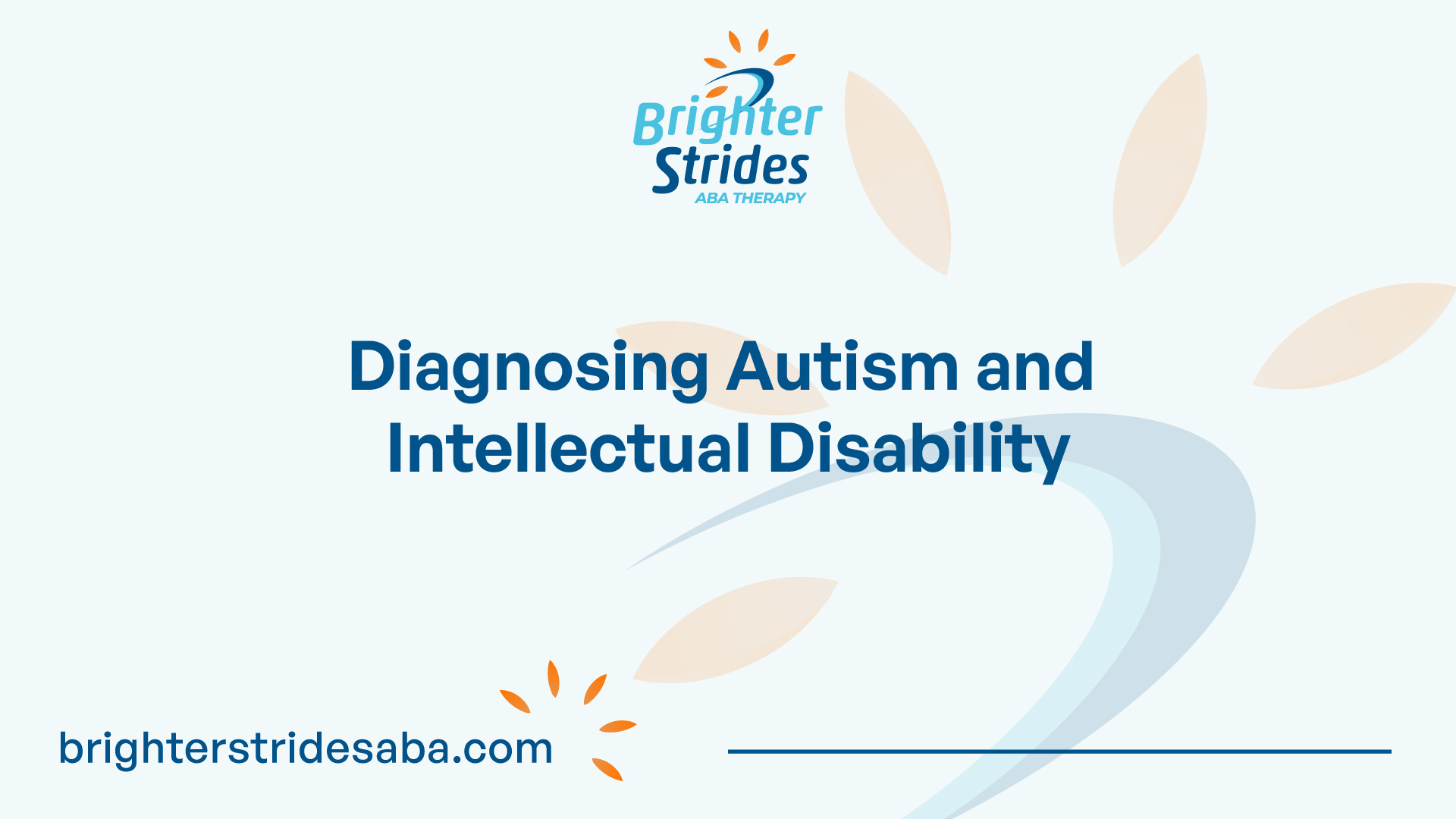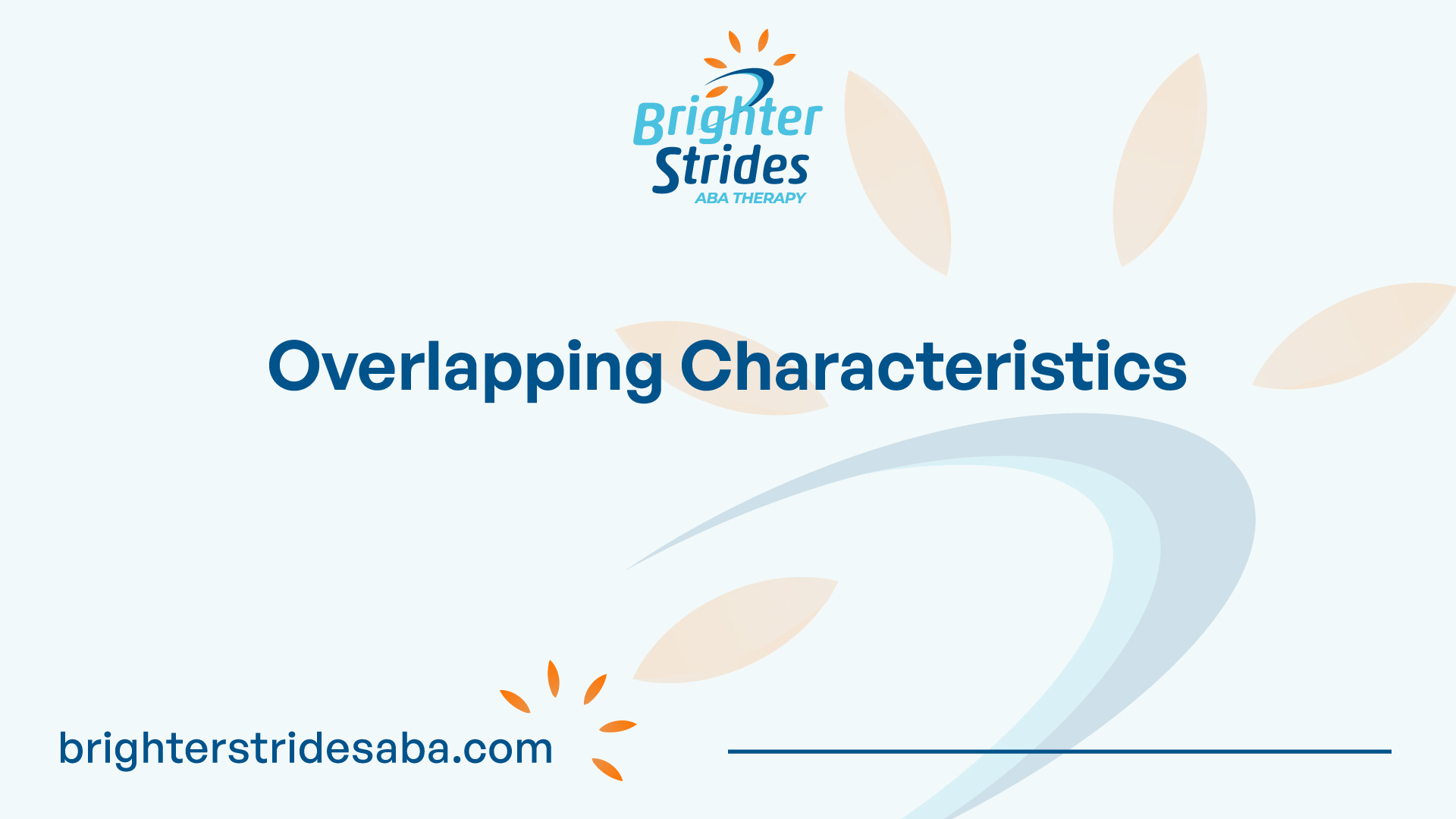The Relationship Between Autism and Intellectual Disability
When exploring the relationship between autism and intellectual disability, it is important to understand the comorbidities that often occur alongside autism and the common genetic mutations associated with these conditions.
Read about: Exploring the Intelligence of Autistic People

Understanding Comorbidities
A study highlighted by Autism Parenting Magazine found that intellectual disability and epilepsy were the main comorbidities associated with autism. Intellectual disability was observed in approximately 75.83% of individuals with autism, emphasizing the common co-occurrence of these two conditions. This suggests that there is a significant overlap between autism and intellectual disability, and it is not uncommon for individuals to have both conditions.
Common Genetic Mutations
Research indicates that individuals with both autism and intellectual disability tend to have more rare and harmful genetic mutations compared to those with only a diagnosis of autism. This suggests a complex interaction between the two conditions [1]. In a review of the literature, it was found that there is substantial genetic overlap between autism and intellectual disability. Efforts to identify rare autism mutations have not uncovered a single gene that increases the chances of autism without also raising the odds of intellectual disability or a related condition.
Understanding the comorbidities and genetic links between autism and intellectual disability is crucial for providing comprehensive support and intervention for individuals with these conditions. By recognizing the complex interactions and common characteristics, professionals and caregivers can develop tailored strategies to address the specific needs of individuals with autism and intellectual disability.
Diagnosing Autism and Intellectual Disability
To better understand the relationship between autism and intellectual disability, it is important to explore the diagnostic criteria and differentiating symptoms of these conditions.

DSM-5 Criteria
The Diagnostic and Statistical Manual of Mental Disorders, 5th Edition (DSM-5) includes intellectual disability (ID) as a freestanding diagnosis within the Neurodevelopmental Disorders section. This allows for the diagnosis of ID alongside any other neurodevelopmental disorder, such as autism spectrum disorder (ASD).
According to the DSM-5, intellectual disability is defined based on deficits in intellectual functioning and adaptive functioning. It is characterized by difficulties in reasoning, problem-solving, comprehending complex ideas, and other cognitive skills. The diagnosis of intellectual disability is typically based on an intelligence quotient (IQ) score of 70 or less.
Read about: Examining Autism Diagnostic Criteria (DSM-5)
Differentiating Symptoms
Autism spectrum disorder (ASD), on the other hand, is primarily defined by social difficulties, communication issues, and repetitive behaviors. The DSM-5 criteria for diagnosing ASD specify deficits in social-communication and restricted, repetitive, and/or sensory behaviors or interests as core areas of symptoms.
When it comes to diagnosing individuals who may exhibit both autism and intellectual disability, it is important to exercise clinical judgment rather than relying solely on prescriptive algorithms. Best practice encourages considering chronological and mental age levels when differentiating between ASD and ID. Specific guidelines are available to aid in the diagnostic process.
It is worth noting that intellectual disability can come with developmental delays, including social differences. This can sometimes lead clinicians to misdiagnose autism if the social differences are greater than expected for the person’s developmental level. Therefore, a comprehensive evaluation that considers multiple aspects of an individual’s functioning is essential to accurately diagnose and differentiate between autism and intellectual disability.
By understanding the DSM-5 criteria and the differentiating symptoms between autism and intellectual disability, healthcare professionals can make informed and accurate diagnoses. It is crucial to consider the unique characteristics and challenges presented by each individual to provide appropriate support and interventions.
Overlapping Characteristics
When exploring the relationship between autism and intellectual disability, it becomes evident that there are overlapping characteristics between the two conditions. These overlapping characteristics can make it challenging to differentiate between them and may lead to misconceptions. In this section, we will focus on two key areas of overlap: communication challenges and behavioral/neurodevelopmental problems.

Communication Challenges
Communication difficulties are a common ground between autism and intellectual disability. Over 57% of adults with intellectual disability experience communication difficulties, which can complicate the diagnosis process. Individuals with autism spectrum disorder (ASD) and those with intellectual disability often share struggles related to social and communication skills [4]. However, it is important to note that communication challenges alone are not sufficient to diagnose autism or intellectual disability.
In the case of autism, communication difficulties can manifest in various ways. Some individuals may have delayed language development or struggle with using and understanding nonverbal communication cues. Others may have difficulty initiating or maintaining conversations, interpreting figurative language, or understanding social nuances.
For individuals with intellectual disability, difficulties in reasoning, problem-solving, and comprehending complex ideas are characteristic. These challenges can impact their ability to communicate effectively, resulting in limitations in vocabulary, grammar, and expressive language skills. It is important to note that while communication difficulties are prevalent in both autism and intellectual disability, the underlying causes and manifestations may vary.
Behavioral and Neurodevelopmental Problems
Another area of overlap between autism and intellectual disability is the presence of behavioral and neurodevelopmental problems. Autism is primarily defined by social difficulties, communication issues, and repetitive behaviors. However, individuals with intellectual disability can also exhibit developmental delays that include social differences. This can make it challenging for clinicians to differentiate between the two conditions, particularly if social differences are greater or lesser than expected for the person’s developmental level [2].
Behavioral problems, such as difficulties with impulse control, hyperactivity, and emotional regulation, can be present in both autism and intellectual disability. These challenges can impact an individual’s daily functioning and may require additional support and intervention.
Neurodevelopmental problems, including sensory sensitivities and difficulties with executive functioning, can also be observed in individuals with both autism and intellectual disability. Sensory sensitivities may manifest as hypersensitivity or hyposensitivity to certain stimuli, such as loud noises or textures. Executive functioning difficulties can affect an individual’s ability to plan, organize, and manage tasks.
It is important to recognize that while communication challenges and behavioral/neurodevelopmental problems are common ground between autism and intellectual disability, each condition has its distinct characteristics. Accurate diagnosis requires a comprehensive evaluation that considers multiple factors, including cognitive abilities, social and communication skills, and behavioral patterns. Only by taking a holistic approach can healthcare professionals provide the appropriate support and interventions for individuals with autism or intellectual disability.
Genetic Links and Syndromes
When examining the relationship between autism and intellectual disability, it becomes evident that certain genetic syndromes are associated with the co-occurrence of these conditions. Fragile X syndrome and Phelan-McDermid syndrome are two examples of rare syndromes where autism and intellectual disability are genetically and clinically intertwined [2].
Fragile X Syndrome
Fragile X syndrome is a genetic condition that is closely associated with both autism and intellectual disability. It is caused by a mutation in the FMR1 gene, which leads to a decrease or absence of the FMRP protein. This protein plays a crucial role in the development and functioning of the brain.
Individuals with Fragile X syndrome often exhibit characteristics of autism, such as social and communication difficulties, repetitive behaviors, and sensory sensitivities. Additionally, intellectual disability is commonly observed in individuals with this syndrome.
Phelan-McDermid Syndrome
Phelan-McDermid syndrome is another genetic disorder that is characterized by the deletion or mutation of genes on the 22q13 region of chromosome 22. This syndrome is associated with a range of symptoms, including developmental delays, intellectual disability, and autism-like behaviors.
The overlapping features of Phelan-McDermid syndrome and autism include impaired social interactions, communication difficulties, and repetitive behaviors. Individuals with this syndrome may also experience low muscle tone and delayed speech development.
It is important to note that these syndromes exemplify the complex genetic and clinical interplay between autism and intellectual disability. While researchers have not clearly separated the role of the genetic mutations in intellectual disability from their contribution to autism, the presence of these syndromes highlights the connection between the two conditions [2].
Understanding the genetic links and syndromes associated with both autism and intellectual disability is crucial in gaining insights into the underlying mechanisms and potential treatment approaches for individuals with these conditions. By studying these genetic connections, researchers hope to unravel the complexities and improve the support and care provided to individuals with autism and intellectual disability.
Prevalence and Trends
Understanding the prevalence and trends surrounding the co-occurrence of autism and intellectual disability is essential for gaining insight into the relationship between these conditions. Let’s explore the co-occurrence rates and how changing diagnostic criteria have influenced our understanding.
Co-Occurrence Rates
Research indicates a significant overlap between autism and intellectual disability. A study found that intellectual disability was present in approximately 75.83% of individuals with autism, highlighting the common comorbidity of these conditions. In the United States, it’s estimated that around 30% of children on the autism spectrum also have an intellectual disability [1]. These statistics emphasize the close association between autism and intellectual disability and the shared challenges faced by individuals with both conditions.
Changing Diagnostic Criteria
Over the years, diagnostic criteria for autism and intellectual disability have evolved, leading to changes in the prevalence rates of their co-occurrence. In the 1980s, as much as 69% of individuals diagnosed with autism also had a diagnosis of intellectual disability. However, by 2014, this figure had declined to 30% as diagnostic criteria for autism became more refined.
The changing diagnostic criteria have allowed for a more nuanced understanding of autism and its relationship to intellectual disability. As researchers and healthcare professionals continue to refine and update these criteria, it is crucial to consider the impact on prevalence rates and the identification of individuals with autism and intellectual disability.
It’s worth noting that the rate of individuals with autism spectrum disorder (ASD) who do not have co-occurring intellectual disability has been rising faster than the rate of individuals with both ASD and intellectual disability, according to the CDC’s most recent report [4]. This highlights the importance of recognizing and supporting the diverse range of individuals on the autism spectrum, including those without intellectual disability.
By understanding the prevalence rates and the influence of changing diagnostic criteria, we can continue to advance our knowledge and provide appropriate support and resources for individuals with autism and intellectual disability.
Educational and Support Considerations
When it comes to supporting individuals with autism and intellectual disability, education plays a crucial role in helping them reach their full potential. Understanding their unique learning needs and providing appropriate support is essential for their academic and personal growth. In this section, we will explore two key considerations: Individualized Education Programs (IEPs) and adapting to learning needs.
Individualized Education Programs
Developing an Individualized Education Program (IEP) is a critical step in supporting the learning needs and independence skills of individuals with autism and intellectual disability. An IEP is a legally binding document that outlines the specific educational goals, services, and accommodations tailored to the individual student.
The process of developing an IEP involves a comprehensive evaluation of the student’s cognitive (IQ) skills through standardized testing and an assessment of adaptive behavior skills through interviews with parents and teachers [4]. This evaluation helps in identifying the strengths and areas of need, enabling the creation of appropriate educational goals and strategies.
The IEP team, which typically includes parents, teachers, specialists, and the student (if appropriate), collaborates to design an educational plan that addresses the individual’s unique requirements. The IEP may include specialized instruction, individualized accommodations, assistive technology, and related services such as speech therapy or occupational therapy.
By tailoring the educational experience to the specific needs of the individual, an IEP aims to maximize learning opportunities, promote skill development, and enhance independence. Regular review and updates of the IEP ensure that it remains relevant and effective as the student progresses.
Adapting to Learning Needs
Adapting to the learning needs of individuals with autism and intellectual disability is essential for creating an inclusive and supportive educational environment. Here are some strategies that can be employed to facilitate effective learning:
- Visual Supports: Visual aids, such as visual schedules, social stories, and visual cues, can help individuals with autism and intellectual disability better understand expectations and navigate daily tasks. These visual supports provide structure, promote independence, and enhance communication.
- Structured Environment: Creating a structured and predictable learning environment can help individuals with autism and intellectual disability feel more secure and focused. Consistent routines, clear expectations, and minimal distractions contribute to a conducive learning environment.
- Multi-Sensory Approaches: Incorporating multi-sensory teaching techniques can enhance engagement and understanding. By combining visual, auditory, and tactile elements, educators can provide a variety of learning experiences that cater to the diverse needs of individuals with autism and intellectual disability.
- Differentiated Instruction: Adapting teaching methods and materials to accommodate diverse learning styles and abilities is essential. Breaking down complex tasks into smaller, more manageable steps, providing additional support, and offering alternative ways of demonstrating knowledge can help individuals with autism and intellectual disability thrive academically.
- Collaboration and Communication: Regular communication and collaboration among educators, parents, and support professionals are crucial for effectively meeting the needs of individuals with autism and intellectual disability. Sharing insights, progress updates, and strategies ensure a coordinated approach to support the individual’s educational journey.
By implementing individualized education programs and adapting teaching methods to cater to the learning needs of individuals with autism and intellectual disability, we can create inclusive educational environments that foster growth, independence, and success.
References
- https://www.autismparentingmagazine.com/autism-vs-intellectual-disability/
- https://www.thetransmitter.org/spectrum/the-blurred-line-between-autism-and-intellectual-disability/
- https://www.ncbi.nlm.nih.gov/pmc/articles/PMC6683759/

 We've just released an article!
Check out our blog!
We've just released an article!
Check out our blog!



